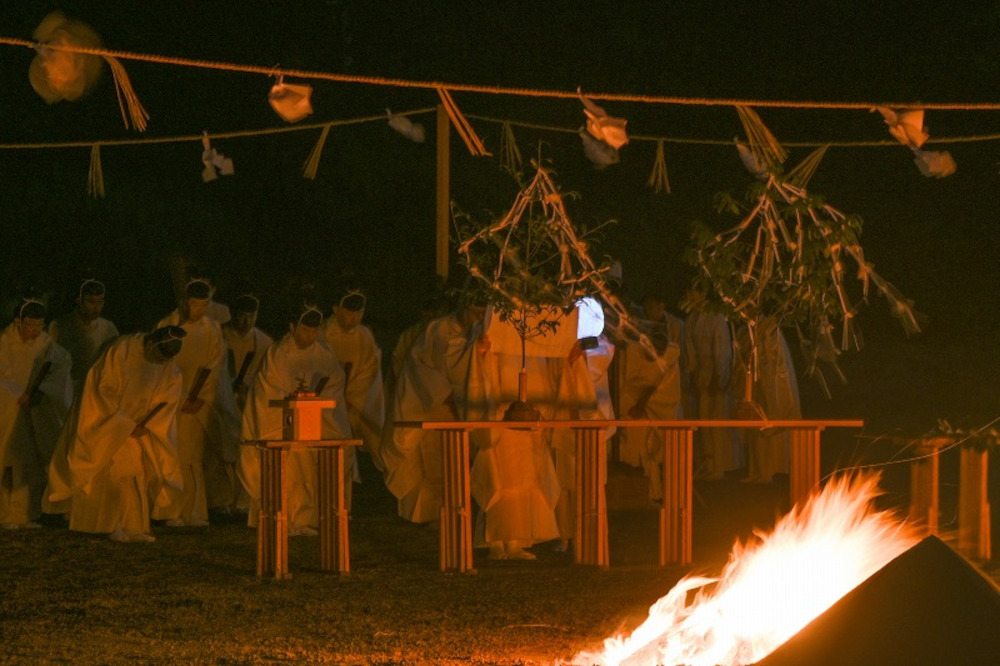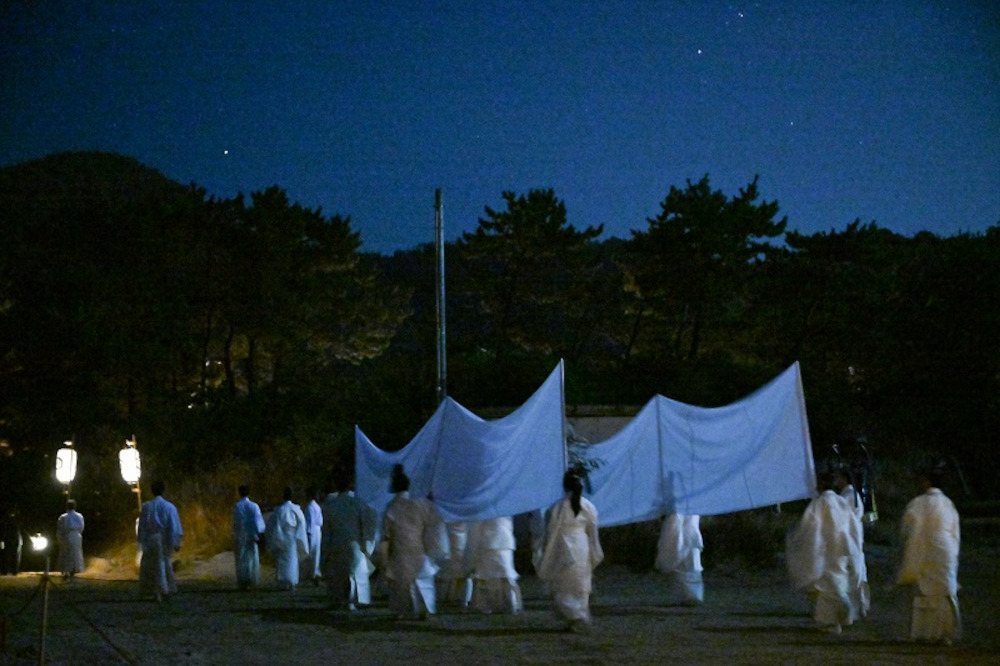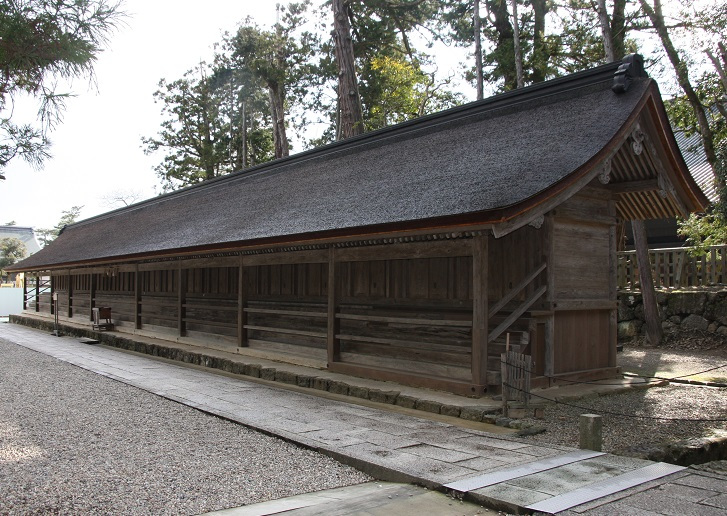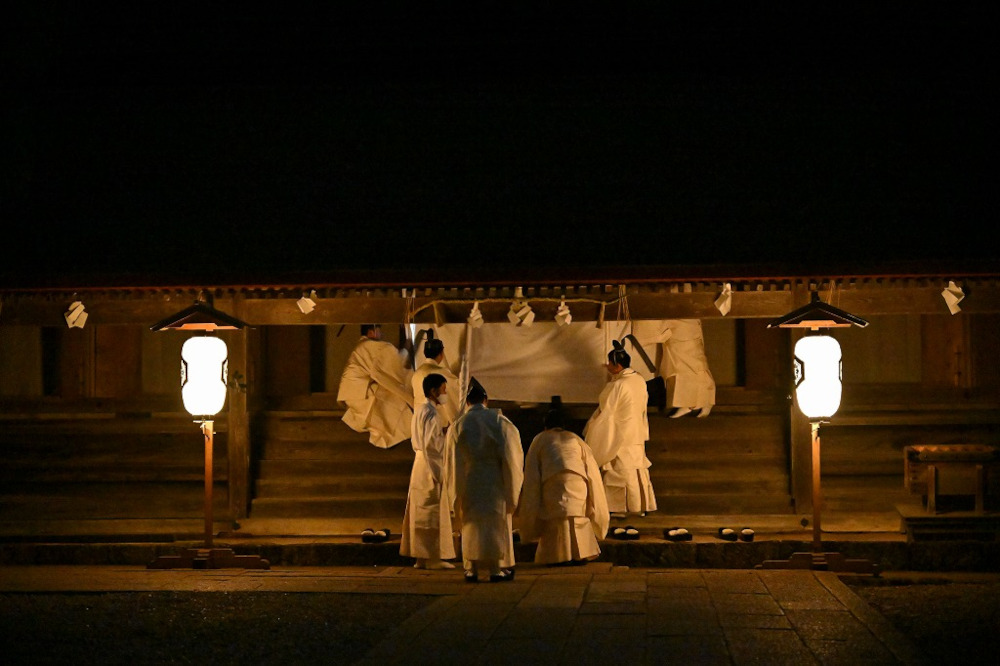Kamiari Festival: The Myriad Deities Arrive at Izumo Oyashiro Shrine

One of the most well-known annual rituals at Izumo Oyashiro Shrine is the Kamiari Festival, held during the tenth month of the lunar calendar. During this period, the myriad deities from across Japan (yaoyorozu no kami) gather at Izumo to determine the relationships that people will form in the coming year. Thus, while it is referred to as the “month without gods” (kannazuki) in most of the country, in Izumo the tenth month is called the “month with gods” (kamiarizuki).
Roots in Ancient Myth
The reason the deities gather in Izumo has its roots in the kuni-yuzuri (“relinquishing the land”) myth, which appears in some of the earliest written records of Japan. According to this myth, the deity Okuninushi no Kami endeavored to bring prosperity to the land, introducing agricultural techniques and medicine. Observing the earthly realm from Takamanohara (“the plain of high heaven”), the sun goddess Amaterasu Omikami decided that it should be governed by her descendants. She sent a series of messengers to convince Okuninushi to cede control of the land to Ninigi no Mikoto, her grandson and legendary ancestor of the imperial family. Okuninushi agreed to her request, and he was granted authority to govern the unseen world. This included not only the realm of the deities, but also affairs dealing with human spirits and the afterlife. In this way, he became a god of en-musubi (“tying of bonds between people”). While this is most often understood as romantic relationships and marriage, the true meaning is much broader and refers to all the relationships that exist between people in society.
Arrival at Inasa Beach
According to Shinto belief, the myriad deities arrive in Izumo from the sea and come ashore at Inasa Beach on the evening of the tenth day of the tenth month. They are guided by a dragon-serpent known as Seguroumihebi. Priests from the shrine light bonfires and set up a temporary altar (himorogi) on the beach to greet the deities. After the welcome ceremonies, the priests guide the deities in a 1-kilometer procession eastward to Izumo Oyashiro.
Inasa Beach also plays a significant role in the kuni-yuzuri myth. It is the location where the final messengers sent by Amaterasu arrived to negotiate with Okuninushi. Given the numerous sacred events connected to the beach, it has become a popular spot for worshippers in modern times. Many will visit the beach and collect a small amount of sand before heading to Izumo Oyashiro. They deposit the sand to either side of Soga no Yashiro Shrine, an auxiliary shrine located behind the Honden (main sanctuary). The worshippers then take an equivalent amount of sand from the shrine and carry it home with them to place on the family altar or scatter at the corners of their property. They believe this practice will bring good luck and protect the household from calamities.

Housing Divine Guests: The Nineteen Shrines
The visiting deities reside in two subsidiary shrines called the Jūkusha (literally “nineteen shrines”) during their stay at Izumo Oyashiro. Located on the eastern and western sides of the inner precincts, these long, rectangular buildings have 19 doors each and were constructed in the early nineteenth century—making them the newest structures in the shrine precincts to hold enshrined deities.
Given the countless number of deities that travel to Izumo during the Kamiari Festival, these comparatively small shrines might seem inadequate. On the contrary, the design and the name are based in ancient numerical symbolism: “1” was considered the beginning of all numbers, while “9” was the end. Therefore, the 19 doors represent an infinitely large space. During the rest of the year, the Jūkusha are used for offering prayers remotely to deities throughout Japan.

Over a seven-day period, the visiting deities decide the relationships that people will form during the coming year. These deliberations take place at Kaminomiya Shrine, an auxiliary shrine located 1 kilometer to the west of Izumo Oyashiro, near Inasa Beach. While crowds of worshippers visit Izumo during this festival, every effort is made to keep quiet and not disturb the discussions. Ritual dances and the accompanying music are muffled, and in the past, neighborhood carpentry and construction projects were halted.
The Deities Depart
When it is time for the deities to leave Izumo Oyashiro on the seventeenth day of the month, a ritual known as the Karasade Festival is conducted. The deities’ goshintai (sacred objects that house Shinto deities) are carried from each of the Jūkusha to the Haiden (worship hall), where priests make offerings and the chief priest (kokuso) chants prayers. Following this rite, a single priest knocks on the door of the inner gate of the Honden three times while announcing the departure of the deities. The deities then disperse to shrines throughout Izumo until the twenty-sixth day, when a second Karasade Festival is held and the deities begin their journeys home to shrines throughout Japan. The doors of the Jukusha are closed, and preparations begin to welcome the deities again the following year.

Information
| Date | From Oct.10 to Oct.17 (Lunar carendar) 2025: 11/29-12/6 |
|---|
